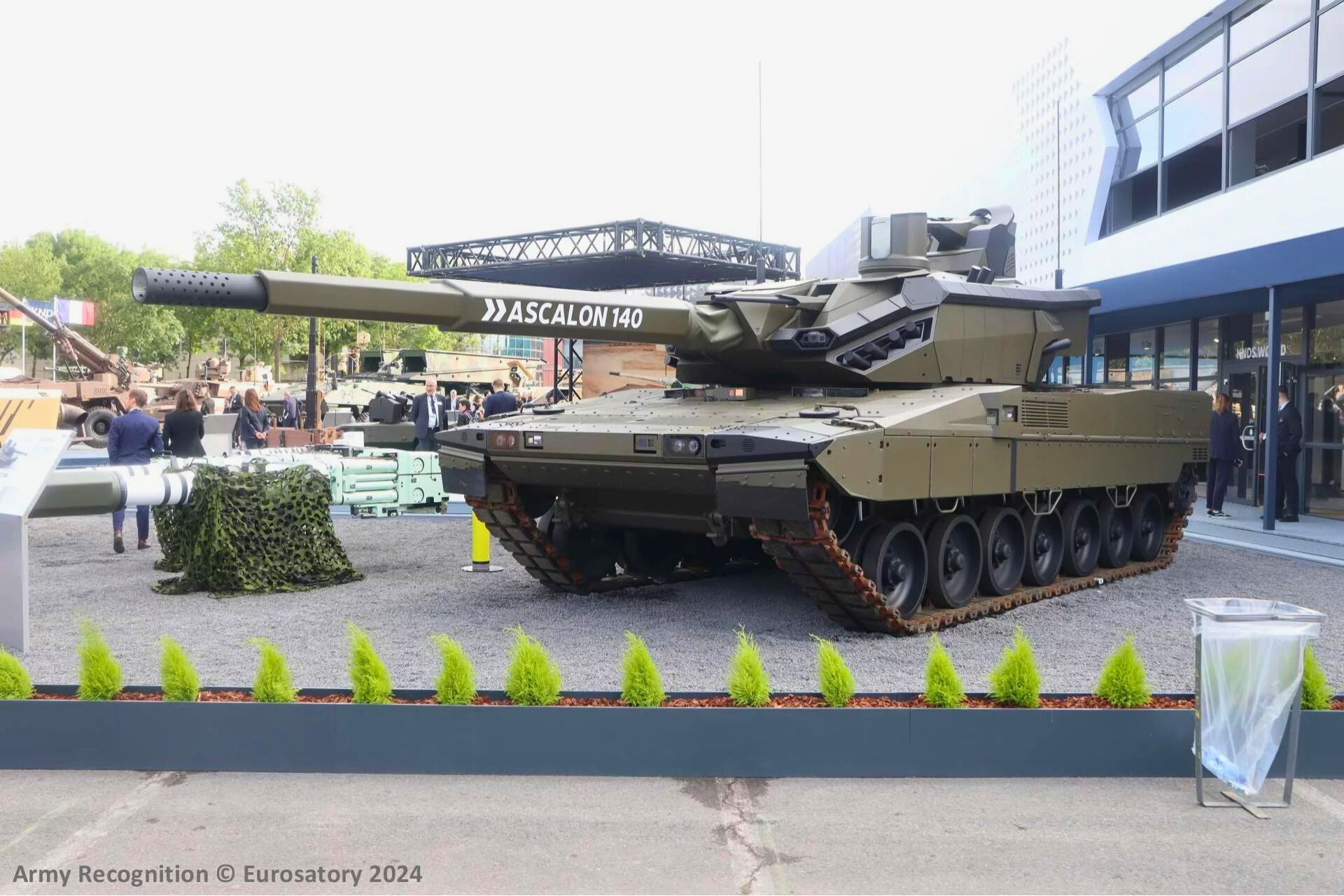Breaking News
Focus: European Main Battle Tank Project's Latest Developments at Heart of Europe's Strategic Autonomy Ambitions.
The European defense landscape is undergoing a significant transformation with the development of the European Main Battle Tank (EMBT), a symbol of Franco-German collaboration. Developed under the KNDS joint venture—combining the expertise of Nexter Systems from France and Krauss-Maffei Wegmann (KMW) from Germany—the EMBT seeks to address the current and future demands of European armored forces. This innovative platform embodies the continent's aspiration to establish a technologically advanced, autonomous defense capability.

The EMBT-ADT 140 variant, unveiled at Eurosatory 2024, introduced the ASCALON 140mm cannon, a cutting-edge weapon surpassing existing standards in range and destructive power. (Picture source: Army Recognition)
Launched in 2018, the EMBT project leverages the strengths of two iconic battle tanks: the Leopard 2 and the Leclerc. By integrating the Leopard 2's robust and mobile chassis with the Leclerc's automated turret, the EMBT achieves a balance of mobility, firepower, and adaptability. This hybrid design aims to redefine the standard for main battle tanks on the global stage, ensuring they remain effective in the face of evolving threats.
The EMBT’s design accommodates a crew of four, optimizing operations with two crew members in the turret (commander and gunner) and two in the hull (driver and combat operator). This setup enhances efficiency across a suite of cutting-edge systems, including a 120mm NATO-compatible cannon with an automatic loader and a coaxial 12.7mm machine gun. The tank’s modular architecture ensures it remains adaptable to future technological advancements, a critical consideration in the rapidly changing field of armored warfare.
The unveiling of the EMBT-ADT 140 variant at Eurosatory 2024 marked a significant milestone. This upgraded version features the ASCALON 140mm cannon, a next-generation weapon designed to surpass current standards in range and destructive power. Developed with future interoperability in mind, this weapon aligns with the requirements of the Main Ground Combat System (MGCS), a long-term European defense initiative scheduled for deployment around 2035.
To address modern battlefield threats, the EMBT incorporates state-of-the-art defensive measures. These include active and passive armor, complemented by the Trophy Active Protection System (APS), which intercepts incoming projectiles before they strike. Additional features such as the E-LAWS laser warning system and GALIX smoke grenade launchers enhance survivability by masking the tank in response to imminent threats. Multi-role sensors provide 360-degree situational awareness, critical for countering emerging challenges like kamikaze drones and precision-guided munitions.
The EMBT's high-performance engine, delivering 1,500 horsepower, provides an impressive operational range of 460 kilometers. Its adaptability across diverse environments, from open plains to urban settings, positions it as a versatile solution for modern warfare.
Despite its technological promise, the EMBT program faces notable challenges. High development and production costs, coupled with the complexity of its systems, may limit widespread adoption, particularly among nations with constrained defense budgets. The need for extensive crew training further complicates its deployment.
Political and industrial differences between France and Germany have also emerged as potential obstacles. Diverging views on arms export policies, industrial sovereignty, and program timelines could delay progress or necessitate compromises that might impact the tank’s final capabilities.
Recent testing of the EMBT has demonstrated its operational relevance. Trials confirmed exceptional mobility across various terrains and validated the precision and power of the 140mm ASCALON cannon. The integration of advanced protection systems and sensors has proven effective against contemporary threats, reinforcing the EMBT's potential as a transitory solution before the MGCS enters service.
Beyond its technical achievements, the EMBT represents a cornerstone of European defense cooperation. In an uncertain geopolitical climate, the project underscores the strategic value of pooling resources and expertise to meet shared security needs. By bringing together Nexter and KMW, the initiative exemplifies how collaboration can overcome national differences to achieve tangible results.
The EMBT program is more than a next-generation battle tank; it is a testament to the potential of collaborative defense efforts in Europe. Its innovations and modular design make it well-suited for addressing current operational needs while laying the groundwork for future advancements. However, the program’s success will depend on overcoming financial and political hurdles to ensure its smooth progression.
As Europe seeks to bolster its strategic autonomy, the EMBT could become a defining element in modernizing the continent's armored forces. Its development demonstrates the strength of multinational cooperation in defense, setting a precedent for future initiatives aimed at securing Europe’s collective security in a rapidly changing global environment.


























